Previous Year Questions- Power System Transients | Power Systems - Electrical Engineering (EE) PDF Download
Q1: Consider a step voltage of magnitude 1 pu travelling along a lossless transmission line that terminates in a reactor. The voltage magnitude across the reactor at the instant travelling wave reaches the reactor is (2010)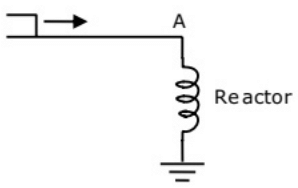 (a) −1pu
(a) −1pu
(b) 1pu
(c) 2pu
(d) 3pu
Ans: (c)
Sol: 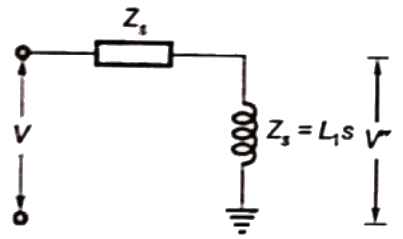 If a step voltage of magnitude 'V' travels through transmission line which is terminated with a inductive load ZL = L1s then voltage transmitted (Induced) across the ZL = L1s
If a step voltage of magnitude 'V' travels through transmission line which is terminated with a inductive load ZL = L1s then voltage transmitted (Induced) across the ZL = L1s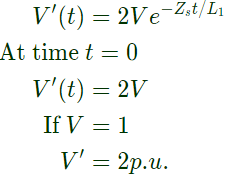
Q2: The insulation strength of an EHV transmission line is mainly governed by (2005)
(a) load power factor
(b) switching over-voltages
(c) harmonics
(d) corona
Ans: (b)
Sol: NOTE: At transmission line voltages upto around 230 kV, the insulation level is dictated by the requirement of protection against lighting. For voltages from 230 kV to 700 kV, both switching transients and lightning overlotages must be accounted for in deciding the insulation levels. In EHV (> 700 kV) switching surges cause overvoltages than lightning and are therefore mainly responsible for insulation level decision.
Q3: Total instantaneous power supplied by a 3-phase ac supply to a balanced R-L load is (2004)
(a) zero
(b) constant
(c) pulsating with zero average
(d) pulsating with the non-zero average
Ans: (b)
Sol: Impedance of the load


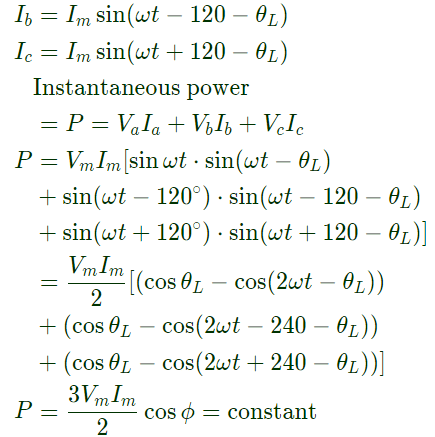
Q4: A surge of 20 kV magnitude travels along a lossless cable towards its junction with two identical lossless overhead transmission lines. The inductance and the capacitance of the cable are 0.4 mH and 0.5 μF per km. The inductance and capacitance of the overhead transmission lines are 1.5 mH and 0.015 μF per km. The magnitude of the voltage at the junction due to surge is (2003)
(a) 36.72 kV
(b) 18.36 kV
(c) 6.07 kV
(d) 33.93 kV
Ans: (d)
Sol: 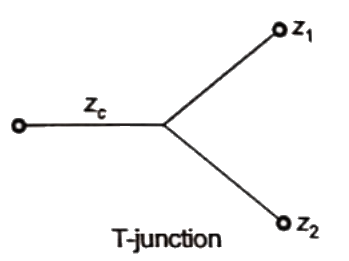 where, z1 = z2
where, z1 = z2
Parameter of cable:
Inducatance = LC = 0.4 mH/km and
Capacitance = CC = 0.5μF/km
Surge impedance of the cable Parameters of OH
Parameters of OH
Transmission lines
Inductance L1 = 1.5 mH/km and
Capacitance = C1 = 0.015μF/km
Surge impedance of the line 
E = 20 kV
Junction voltage
|
21 videos|109 docs|45 tests
|















